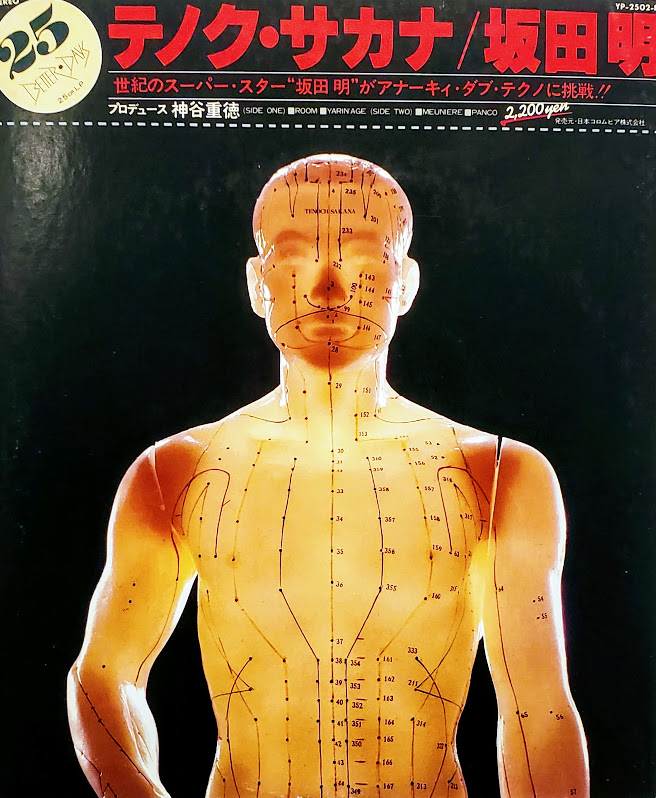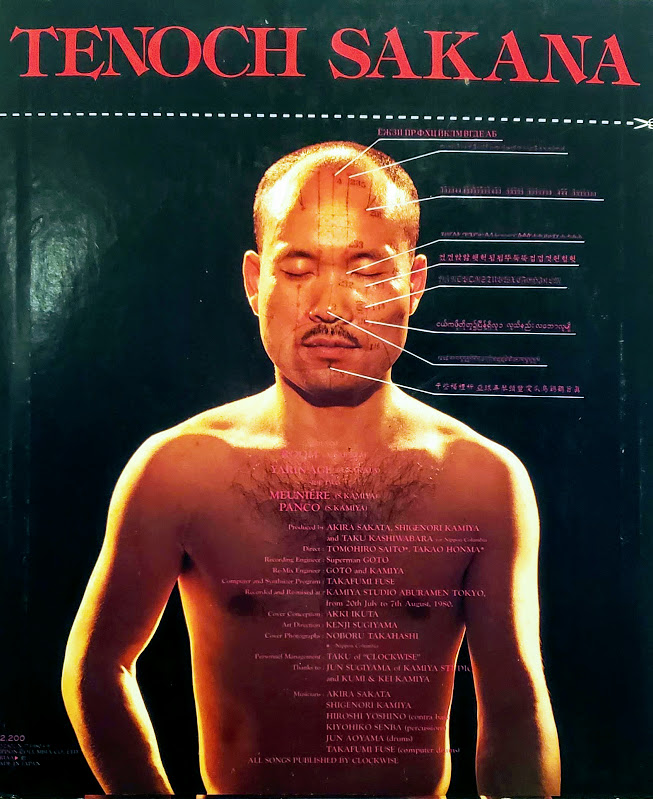Akira Sakata – テノク・サカナÂ
Room
Yarin’Age
Meuniere
Panco
Akira Sakata is a Japanese saxophonist who has worked with Bill Laswell and Jim O’Rouke. If you know anything about those artists, then I feel that pretty much says it all. Working as a frequent collaborator of those two usually earmarks you as a “weird avant-garde motherfucker for whom ideas like ‘genre’ and ‘traditional song structure’ does not apply.”
I bought this record not knowing who Sakata was, grabbing it instead because I noticed that it was put out by Better Days, a label known for their avant-garde pop releases by artists like Ryuichi Sakamoto and Yazuaki Shimizu. And this record certainly didn’t disappoint in that regard. Even if Sakata didn’t work with Laswell, I would be forced to compare the two here, this sounds like something Laswell would’ve cooked up around the same time, since its an intersection between the then burgeoning electro scene (this came out in 1980) and free, almost 100% improvisational jazz. But while Laswell’s experiments with melding electro and jazz gave us mainstream smashes like Herbie Hancock’s “Rockit,” this swings hard in the other way. The electro elements don’t make the music more mainstream, in fact, the opposite happens. Sakata’s sparse, wildly unpredictable playing takes the beats and bloops of the electronic instruments and transforms them into a tool for his free jazz freakouts.
On side A of this four-track release, that’s nearly as annoying as it sounds. Neither “Room” nor “Yarin’Age” strive to achieve any sense of form. If they’re truly improvisational sessions, they sound like them, meandering around in search or a hook or theme, and largely failing. As experiments, they’re interesting. As songs, they’re pretty nerve-grating.
Side B fairs far better though, the electronic elements are more locked-down. On “Meuniere,” the Sakata’s sax is moved far into the back of the mix, and the wild electronic sequences are given center stage. For me, this is the highlight of the album, and almost krautrock in execution. The pulsing beat is interesting enough on its own, but Sakata’s saxophone gives the song a style and sense of life I don’t hear often in electronic music. It’s Ninja Tune by way of Can. “Panco,” is the most traditional-sounding number one record, and the most full-sounding one too. Real drums are mixed with electronic beats, both serving to steady Sakata’s wailing sax. All the while, a menacing synth-strings section plays behind it all. If there was a bit more form to it, it could even work as film music.
Sakata wasn’t working alone on this, among his collaborators on this release was Shigenori Kamiya, whose name some readers of this site might recognize as he’s responsible for one of my favorite Japanese electronic albums of the 1970s, Mu. It’s probably safe to assume that the electronic bits were more his doing that Sakata’s.
Another release that’s definitely not for everyone, maybe not even me. But if you like posts I’ve shared in the past by artists like Blue Box, Toshinori Kondo, or Jun Fukamachi, then you might enjoy this one too! Let me know what you think in the comments!


